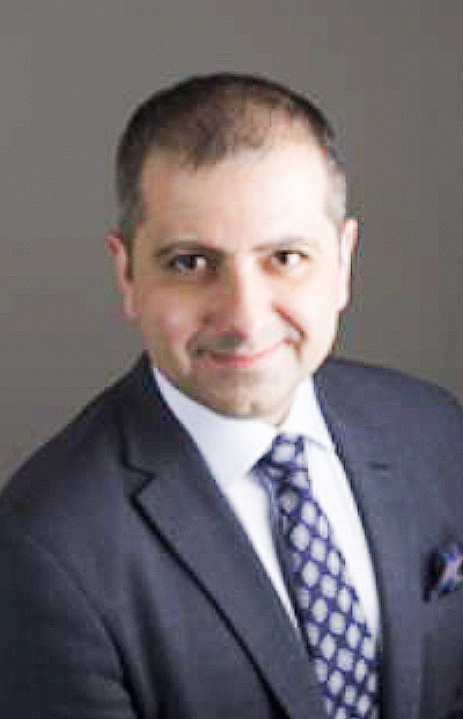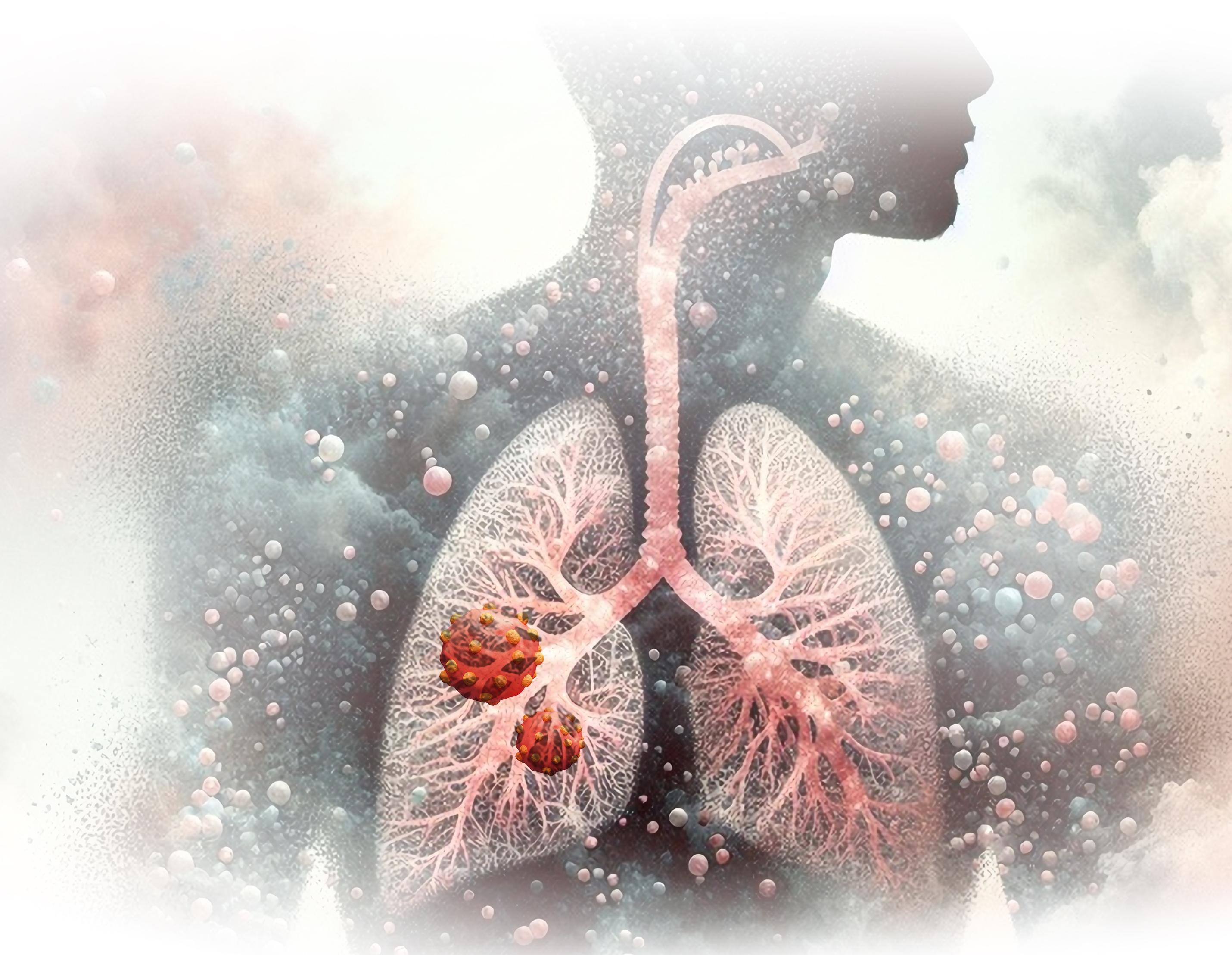

• Headache Specialist in Boston, Massachusetts (MA), USA
• Assistant Professor of Neurology and Anesthesia at Harvard Medical School
• Director of the Comprehensive Headache Center at Beth Israel Deaconess Medical Center in Boston, MA
Migraine is a primary neurological disorder characterized by episodes of moderate-to-severe headache and is considered as a significant cause of disability globally. Thus, it deserves greater attention and a better understanding.1-5 To enhance the understanding on recent advances in the management of migraine, an expert interview was conducted with Dr. Sait Ashina, a world-renowned neurologist, on November the 9th, 2024 at JW Marriott Hotel Hong Kong. During the interview, Dr. Ashina highlighted current issues with migraine management and discussed the management of chronic migraine based on the international guideline recommendations, including the preventive treatments, medication switching, and comprehensive treatment approaches that can be considered. Furthermore, he emphasized the role of calcitonin gene-related peptide (CGRP) targeting treatments in clinical practice.
As a member of the taskforce dedicated to developing the International Headache Society (IHS) global practice recommendations for both acute and preventive pharmacological treatments for migraine,6,7 Dr. Ashina stressed the preventive aspects of these guidelines during the interview. He explained that the rationale behind these guidelines is to assist clinicians in assessing and identifying the most appropriate treatments for patients with migraine. He added that the practice recommendations are based on already established guidelines and other evidence derived from randomized controlled studies, real-world data, and expert opinions.
The IHS previously stated that preventive medications should be considered for certain types of patients with migraine, regardless of attack frequency.7 In relation to potential candidates for preventive treatments, Dr. Ashina pointed out that the guidelines currently recommend such preventive treatments not only for patients with high attack frequency, but also for those with specific migraine features, such as patients with prolonged or frequent auras, and severe migraine attacks associated with significant disability. Moreover, all patients who are heavily dependent on headache abortive medications, and those who are at risk of medication overuse, or sometimes experience side effects due to headache abortive medications should be also offered preventive treatments.
Dr. Ashina explained that switching between anti-CGRP medications is quite common in his clinical practice, particularly when patients report ineffectiveness that may occur with either gepants (CGRP receptor antagonists) or CGRP monoclonal antibodies, prompting a treatment switching. At times, issues related to treatment intolerance, adherence, or compliance may also arise, necessitating a change, according to Dr. Ashina.
Currently, there is some limited evidence suggesting that switching from receptor-binding CGRP monoclonal antibodies to ligand-binding ones can be beneficial.8 Furthermore, patients who fail to respond to the first-line treatment may respond to the second-line treatment. Similarly, switching from a gepant to a CGRP monoclonal antibody, or vice versa, may also be an effective approach, according to Dr. Ashina.
Dr. Ashina emphasized that the flexibility in switching between treatments may enable clinicians to tailor care to each patient’s needs, and effectively manage issues related to intolerance, drug effectiveness, and headache-related disabilities. This individualized approach is essential for ensuring long-term patient treatment adherence and achieving a successful treatment outcome. Furthermore, educating patients about the potential trial-and-error phases during these transitions and setting realistic goals and expectations for their treatment are believed to be paramount.
According to Dr. Ashina, migraine management should adopt a comprehensive approach that includes asking patients about their triggers and how to address them, as well as making other lifestyle adjustments such as improving sleep hygiene and providing behavioral support. This approach has been substantiated in previous studies, where combining non-pharmacological measures with pharmacological treatments leads to more favorable outcomes.9,10 Additionally, combined treatments for migraine prevention may be considered as a promising approach to addressing the diverse and complex mechanisms underlying migraine.11
Determining the optimal duration for preventive treatment remains a complex issue; and based on Dr. Ashina’s experience, some of his patients on CGRP monoclonal antibodies may feel dissatisfied with their treatment due to a partial response when evaluated at three months. However, after thorough discussions and additional support, these patients were often advised to continue their treatment. At three months after the first follow-up visit, many patients began reporting significant improvements. Although there is no definitive evidence that can pinpoint an optimal treatment duration in the current clinical guidelines, the guidelines recommend reassessing treatments every 6 to 12 months.7
The IHS practice recommendations for preventive treatments suggest that efficacy should be defined as achieving a ≥ 50% response. In other words, patients should experience at least a 50% reduction in headache frequency.7 However, for certain patients with refractory headaches, high-frequency or chronic migraine, a new sub-threshold of a 30% reduction in monthly migraine days has recently been introduced.7 This new threshold is a valuable tool in clinical practice, making it easier to assess patients and provide guidance on treatment. For patients with chronic migraine, even a partial response can sometimes be clinically meaningful. Additionally, as Dr. Ashina stressed, other metrics such as the patient’s quality of life and functional ability should also be taken into account, apart from the number of headache days. For instance, chronic daily headaches often cause constant pain, which can be very debilitating for patients. For such patients, even a reduction in headache intensity can be clinically meaningful, since the patient is able to function on daily basis with decreased intensity of the headache.
The latest IHS practice guidelines recommend that the first treatment option for migraine should be a migraine-specific drug. Moreover, migraine-specific drugs may even be used in those who have comorbidities. For those with migraine and an ongoing comorbid condition, it is possible to use agents that can provide benefit on both the migraine and the existing comorbidity.7 However, Dr. Ashina commented that in certain healthcare settings or in certain countries where migraine-specific drugs are not available yet, healthcare providers may still opt for other treatment options. Remarkably, the practice recommendations have prioritized migraine-specific treatments such as triptans, gepants, CGRP monoclonal antibodies over general analgesics, and other non-specific migraine preventive treatments for a better treatment outcome and faster symptomatic control. Other pressing issues include the medication overuse headache, which results from overusing one or more headache abortive medications.12 For that population group, large evidence shows that CGRP targeting treatments may be beneficial.13-15
Both the IHS and the National Institute for Health and Care Research (NIHR) recommendations have highlighted that the current evidence for treating chronic migraine is the strongest for certain drugs that include topiramate, botulinum toxin, and CGRP monoclonal antibodies.7,16 Here, Dr. Ashina believes that gepants would also be listed amongst the strongest treatments for chronic migraine in near future.
In clinical practice, an evidence-based approach encourages the use of these treatments due to their strong data support. There is a clear pathway for trying these treatment options because they are effective, and other treatments may be contraindicated or poorly tolerated. Clinicians should carefully balance the efficacy, safety, and compliance factors for each drug, taking into account the long-term therapeutic effects for each patient. Monitoring side effects, adherence, and periodic reassessment can ensure ongoing therapy and optimize patient outcomes.
Pharmacological options for children and adolescents remain limited due to scarcity of rigorous research data. However, there has been emerging evidence for the use of the CGRP targeting treatments in pediatric and adolescent populations. A recent study on fremanezumab has shown favorable outcomes, and the study data was presented at conferences in the international academic community.17
The results are very encouraging since this will allow clinicians to utilize these treatments to help these migraine population subgroups, according to Dr. Ashina. Currently, most of the guidelines recommend the use of non-specific pain management and non-pharmacological approaches.18 But, with the introduction of more migraine-specific treatments, Dr. Ashina hoped to see a shift in treatment paradigm with better patient outcomes. The advent of newer agents may one day transform the treatment landscape for pediatric and adolescent migraine populations, and this requires further long-term studies and a more cautious approach.
Dr. Ashina opined that the international guidelines, including the American Headache Society guidelines, the European Headache Federation guidelines, and lately the IHS global practice recommendations, all emphasized the use of the migraine-specific treatments as a first choice.7,19,20 For instance, the IHS global practice recommendations proposed using CGRP targeting treatments, or migraine-specific treatments in those with existing comorbidities. Remarkably, these treatment options have made migraine management more effective, with a reduced likelihood of side effects and increased adherence and tolerability. Nonetheless, there is a need to adapt the guidelines and incorporate these new treatments to support their use in clinical practice. Furthermore, with treatment advances, the treatment accessibility is equally important for a wider therapeutic benefit.
References
1. WHO. Migraine and other headache disorders. 6 March 2024. Available from: https://www.who.int/news-room/fact-sheets/detail/headache-disorders. [Accessed 6 February 2025]. 2. Gupta J and Gaurkar SS. Cureus. 2022;14(8):e28347. 3. Ashina M, et al. Lancet. 2021;397(10283):1485–95. 4. GBD 2016 Headache Collaborators. Lancet Neurol. 2018;17(11):954–76. 5. Pistoia F, et al. J Headache Pain. 2022;23(1):110. 6. Puledda F, et al. Cephalalgia. 2024;44(8):3331024241252666. 7. Puledda F, et al. Cephalalgia. 2024;44(9):3331024241269735. 8. Lambru G, et al. Neurotherapeutics. 2023;20(5):1284–93. 9. Puledda F and Shields K. Neurotherapeutics. 2018;15(2):336–45. 10. Patel PS and Minen MT. J Neuroophthalmol. 2019;39(3):360–9. 11. Shamliyan TA, Kane RL and Taylor FR. Migraine in adults: preventive pharmacologic treatments. Rockville, MD: Agency for Healthcare Research and Quality (AHRQ), 2013. 12. Ashina S, et al. Nat Rev Dis Primers. 2023;9(1):5. 13. Dodick DW, et al. Cephalalgia. 2021;41(3):340–52. 14. Silberstein SD, et al. J Headache Pain. 2020;21(1):114. 15. Diener HC, et al. Headache. 2021;61(1):125–36. 16. Mistry H, et al. Health Technol Assess. 2024;28(63):1–329. 17. Yu S, et al. Presented at MTIS 2024 [EP30]. In: Abstracts of the 20th Biennial Migraine Trust International Symposium, London UK, 5th to 8th September 2024. Cephalalgia. 2024;44(12): 3331024241280496. 18. Oskoui M, et al. Neurology. 2019 Sep 10;93(11):500–9. 19. Charles AC, et al. Headache. 2024;64(4):333–41. 20. Sacco S, et al. J Headache Pain. 2022;23(1):67.
For Healthcare Professionals Only
Medical writing by Vital Base International Limited, supported by Teva Hong Kong
AJO-HK-NP-00045-03-2025





